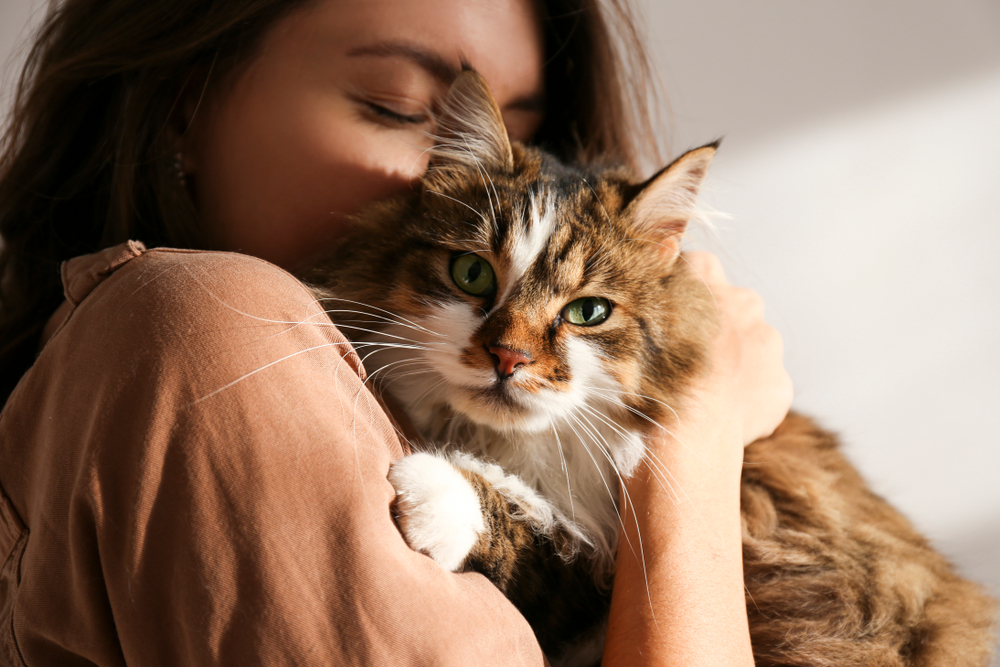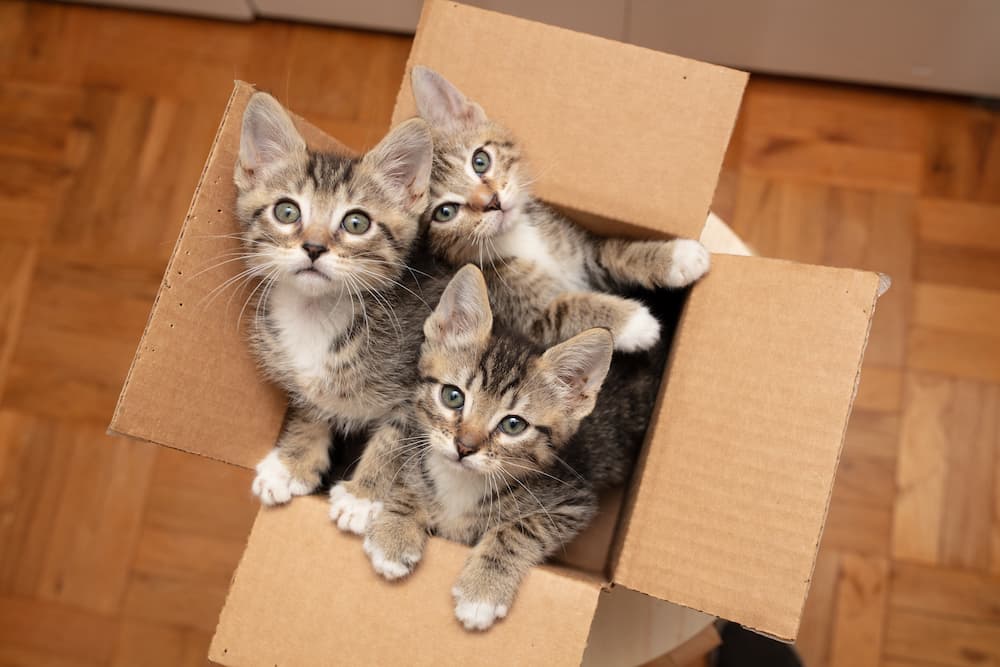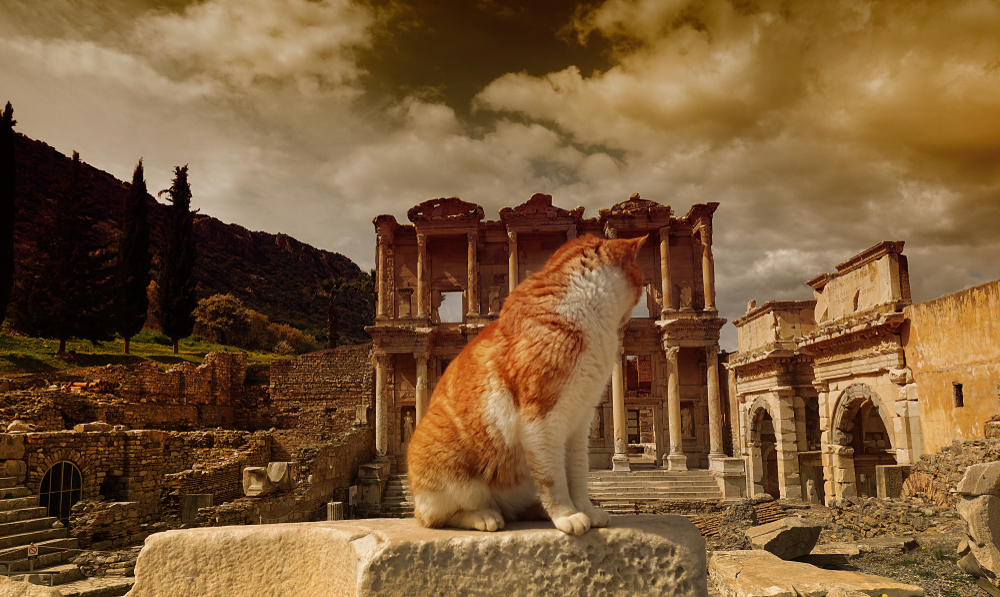If you share your life with a cat, you know that you’re essentially living alongside a wild animal! All of their quirks, instincts and physical features point to their former days as nature’s best predators. It makes you wonder, how far back does human and cat history go? Why are these so-called domesticated kitties still so close to their feral feline relatives? And despite their wild roots, are cats really able to form bonds with their Owners and dedicated Cat Sitters (spoiler: yes!)
In this article, we’re going all the way back to the beginning to tell the tale (or should we say tail) of cat history!
 Before the litter box: pre-human cat history
Before the litter box: pre-human cat history
All cats, from the Norwegian Forest Cat to the sleek Siamese, come from one species: felis silvestris lybica, or the African Wildcat. This small, subtly-striped feline probably first originated in Northern Africa, but expanded its reach to Europe, the Middle East and the Asian continent.
While similar in size to our domesticated cats, the African Wildcat is slightly taller to help them move easily through tall grasses. And with tabby-like markings and a light reddish or beige coat, they are perfectly camouflaged for life in deserts, savannahs, plains, and even forests.
Also like our modern feline companions, African Wildcats are crepuscular, meaning that they are most active during the early morning hours and dusk. But, they can adapt to different sleep cycles depending on the activity of their prey.
Clearly, there are many similarities between the African Wildcat and the domestic cat. In fact, if you were to see an African Wildcat today, which is thankfully possible given that this species continues to thrive in its natural habitat, you would be struck by the resemblance! But it’s not just looks and lifestyle habits that have convinced scientists that domestic cats descend from the African Wildcat. An analysis of DNA shows that felis domesticus shares enough genetic similarities with felis silvestris to be considered direct descendents.
Cats and humans make a deal
African Wildcats aren’t only skilled and effective hunters, they’re also cleverly opportunistic. In fact, while we humans may have admired these felines from a distance, it’s likely that their hunting prowess is what brought them to our doorsteps some 10,000 years ago.
Why then? Well, around the beginning of the Stone Age, felis silvestris noticed that humans had learned a fascinating new skill: farming! The change proved advantageous for both (hu)man and feline. While we perfected our bread recipes, cats patrolled the farmland and kept mice out of the grain storage. With both parties well-fed, humans and felines began to build a relationship of cooperation.
It’s possible that during this time, humans began to selectively breed the African Wildcat for friendliness and affection. But this is difficult to prove. What we do know is that by the time the Ancient Egyptians began mummifying cats and including them in paintings around 1950 B.C.E., they had risen to a sacred status. Not only were they seen as invaluable pest-control, but they had earned a role as companions both in the world of the living and the afterlife.
Cats overcome their aversion to water
Except for Antarctica, domestic cats can be found in every continent on Earth! From the northern cold of Alaska to the island of Madagascar and even right here in Australia, domestic cats thrive. But how did they travel so widely? (And, maybe this is just a question we have but, were they carrying tiny paws-ports?)
Well, again, it seems to have been a mutually beneficial move for cats and their two-legged friends. As humans began to expand their reach by boat, domestic cats were kept on board as a way to control rat populations. And once they reached new lands, the felines did what they do best: hunt. No matter the landscape or weather conditions, these determined domesticated cats were able to survive and thrive both around humans and on their own.
Of course, while the cats were just living out their natural instincts, the effects have been anything but positive in many places. After all, without thousands of years of evolution to protect them from this skilled predator, many prey animals have suffered from the introduction of domestic cats over the last three hundred years. Here in Australia, for instance, feral cats are responsible for the extinction of several species of birds and they continue to threaten the existence of some mammals.
Modern cat history
Eventually, cats would transition from standoffish pest control to beloved family pet. And it actually happened more recently than you might expect!
Cats weren’t considered to be companion animals until sometime during the 19th century. Stories like “The Black Cat” by American writer Edgar Allan Poe hint at the phasing out of old superstitions about cats being associated with witches and dark magic in favour of a more modern cat-Owner relationship.
By the beginning of the 20th century, cats were spending more and more time with their beloved humans. And as interest in our feline friends grew, so did the list of official cat breeds. Between the 1930s and 1990s, Cat Owners suddenly had the option between the stunningly beautiful Himalayans or conveniently hairless Sphynx cats, adorably short-legged Munchkin cats or graceful Chantilly-Tiffanys.
Unlike dog breeding, cats have been bred primarily for personality traits and physical features. That means that, despite the reputation for being standoffish, it’s actually quite easy to find a cat breed that can fit seamlessly into your lifestyle!
 What we know about cats today
What we know about cats today
Now that you know more about human’s relationship with cats, what does this all mean for the feline friend purring at your side right at this moment? Here are a few main takeaways that cat history reveals about our modern companions:
- Cats still have a very high prey drive. Without a doubt, cats never lost their amazing ability to hunt. Many of their physical features, including large eyes and ears, muted movements, and quick reflexes, mean that they can still bring down a bird or a rodent in the blink of an eye. Even if you don’t think your furbaby has it in them, trust us, they do! In fact, cats are such skilled hunters that it’s recommended not to let them wander outside unsupervised. An indoor lifestyle, with plenty of mental stimulation, is the safest way to protect local ecosystems.
- Cats didn’t evolve to show emotion, but that doesn’t mean they aren’t connected! Unlike dogs, cats didn’t evolve the facial muscles necessary to show emotions that humans can recognise. But that doesn’t mean that they don’t have the capacity to form strong bonds with their humans. In fact, in studies of the cat-human bond, cats proved their attachment to their Owners through attention seeking behaviours, stress at separation, and affection upon reunion. Clearly, our cats appreciate our presence! For this reason, it’s always a good idea to leave your beloved feline in the care of a doting Pet Sitter if you’ll be leaving them alone for long periods.
- No matter what kind of Pet Owner you are, there’s a purrfect feline out there for you. Whether you’re looking for an energetic socialite or a calm cuddler, the cat world is full of different feline personalities. It’s just a matter of finding your perfect match! Thanks to human and cat history, we get to enjoy the company of these very special companion animals!

